#princeton Neptune
Text
The Easiest Way to Paint Fine Art Winter Landscape
This is the final artwork of the Winter Landscape that I’ve made using the wet-on-wet technique which you will be learning in this blog step by step.
First of all, let’s discuss more on the wet-on-wet technique that I have used extensively for this artwork. This technique will help us in achieving a more natural and softer look and it is less time-consuming.
Wet-on-Wet technique is a process of applying layers of wet paint before the older layer of wet paint dries on the surface/paper which is already wet. We wet our surface using clean water before we start painting to give more natural flow and to create effects. It helps in blending colours softly with less harsh strokes and blurring out details to give a more natural yet abstract scene to the painting. One can also use the wet-on-wet technique along with the wet-on-dry technique (The process of applying wet paint on the dry surface or the dried paint). But we’ll stick to using the wet-on-wet technique for this.
Materials that I have used for this artwork (however, you can start with whatever you have right now):
A Brustro Artists’ Natural Hair MOP brush, a Princeton Neptune Series flat brush, and a Brustro miniature brush.
You can use watercolours, acrylic, gouache or oil paints but I’ve used watercolours of pigments Blue (Cobalt blue/ Prussian blue), Orange, Red, Black, Dark Green, and Winsor & Newton Designers white Gouache (if available or you can use white acrylic paint as an alternative).
Also, Winsor & Newton Masking Fluid Masking Fluid is used as a protective film to separate the paints getting mixed.
Brustro Watercolour Paper of 300 GSM or above.
Quick Tips:
Premix the shades that will be needed.
Tape down the sides of your canvas on a piece of cardboard or a pad to paint with more comfort.
Always keep clean water in small jars.
Use a watercolor paper that has more absorbency (300 GSM or above).
Also, never forget tissues to clean your brushes before you move on to the next shade.
Now grab a paper and brush and let's get it started!
1. First we start with sketching the rough figure of cabins and pine trees and mark out the details for the doors and windows of the cabins and the cabin fence. Take reference from the below image.
2. Next, we will apply desired Winsor & Newton Art Masking Fluid only to the cabins and trees. This will help us to separate the area for painting the sky later. And the paints will not mess with our cabins and trees. (This step is very important it’ll help to ensure that our colours are not messing with each other)
3. Then we will apply some clean water uniformly on the top side of the paper where we are going to paint the sky using any Princeton Neptune Series flat brush. Make sure that you apply a thin layer of water, if you see puddles that means you've applied too much of the water needed. The next layer would be using the Blue paint but we need to make sure that we use more water than the paint to maintain the transparency.
Next, we will start with swiping and dabbing the blue shade (while it is still wet) moderately in curves with any round brush as you can see in the image below.
As we move forward, we will add more blue shade and less water to give a little more opaqueness to our sky.
4. Next we add the shades of orange and red in the same process of swiping and dabbing our brush in curve stokes as we did in step 3 and then blend and try to merge it little by little with the Blue above so it gives an impression of a setting sun before our base dries out.
We can use the Bloom effect here, and to get this, we first spread a thin layer of the paint water (again make sure that you use more water and less paint) so that our pigment can spread blurring into the wet area, drop a splotch of paint in the wet area and we let it spread into its own, this method gives the bloom effect as it merges with colours on its own. As astonishing as it sounds it is more fun to watch in itself.
Make sure that you have built the depths of the colours slowly as you go with layers and layers, first with more water and then with more paint.
5. Now we take Winsor & Newton Designers white Gouache and blend it with a little bit of grey shade and brush right through the paper below where the cabin fence ends and a few strokes on the lower side of our paper to form the sheet of snow as shown. Blend the harsh edges with a clean brush to give it a softer texture.
6. Remove the masking fluid we had applied earlier to the cabins and pine trees (use a piece of clothing to slowly scrape off the fluid). And start by applying black shade to the cabins with a miniature brush, this time we will go from dark to light so our brush should have more paint and less water. Then move on to painting the pine trees, we will add pine trees near the cabins. Use dark green shade in a zig-zag motion again with a miniature brush to paint pine trees. Build on the colour slowly adding the details to it.
7. In this painting, we are depicting the scene after a snowfall so we’ll have to add the details of fallen snow using white gouache or white acrylic paint to the cabin rooftops and pine trees. Make fences around the cabin using black colour and add some white strokes to highlight the windows and doors of the cabins. Paint heaps of snow around the cabins and cabin fences by mixing a dark shade with the white gouache while emphasizing the details to get the final result.
Finally, mesmerize the art you’ve created!
I hope you guys enjoy the process of painting this beautiful Winter Landscape as I had enjoyed it when I first created it.
#online stationery#brustro colour pencil#gouache color#silver brush black velvet#Princeton Neptune Series#da vinci 5898 Series
0 notes
Photo
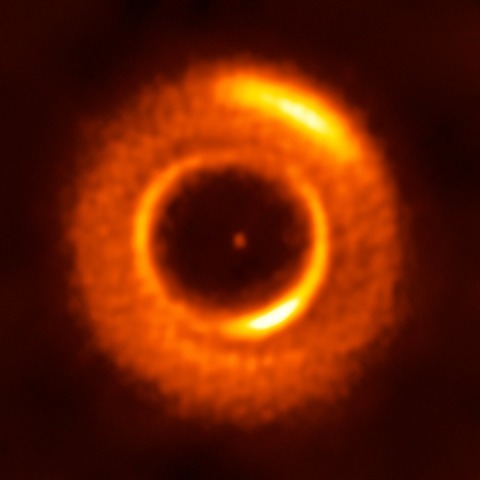


Astronomers use ‘little hurricanes’ to weigh and date planets around young stars Little ‘hurricanes’ that form in the discs of gas and dust around young stars can be used to study certain aspects of planet formation, even for smaller planets which orbit their star at large distances and are out of reach for most telescopes. Researchers from the University of Cambridge and the Institute for Advanced Study have developed a technique, which uses observations of these ‘hurricanes’ by the Atacama Large Millimeter/submillimetre Array (ALMA) to place some limits on the mass and age of planets in a young star system. Pancake-like clouds of gases, dust and ice surrounding young stars – known as protoplanetary discs - are where the process of planet formation begins. Through a process known as core accretion, gravity causes particles in the disc to stick to each other, eventually forming larger solid bodies such as asteroids or planets. As young planets form, they start to carve gaps in the protoplanetary disc, like grooves on a vinyl record. Even a relatively small planet – as small as one-tenth the mass of Jupiter according to some recent calculations – may be capable of creating such gaps. As these ‘super-Neptune’ planets can orbit their star at a distance greater than Pluto orbits the Sun, traditional methods of exoplanet detection cannot be used. In addition to the grooves, observations from ALMA have shown other distinct structures in protoplanetary discs, such as banana- or peanut-shaped arcs and clumps. It had been thought that at least some of these structures were also driven by planets. “Something must be causing these structures to form,” said lead author Professor Roman Rafikov from Cambridge’s Department of Applied Mathematics and Theoretical Physics, and the Institute for Advanced Study in Princeton, New Jersey. “One of the possible mechanisms for producing these structures – and certainly the most intriguing one – is that dust particles that we see as arcs and clumps are concentrated in the centres of fluid vortices: essentially little hurricanes that can be triggered by a particular instability at the edges of the gaps carved in protoplanetary discs by planets.” Working with his PhD student Nicolas Cimerman, Rafikov used this interpretation to develop a method to constrain a planet’s mass or age if a vortex is observed in a protoplanetary disc. Their results have been accepted for publication in two separate papers in the Monthly Notices of the Royal Astronomical Society. “It’s extremely difficult to study smaller planets that are far away from their star by directly imaging them: it would be like trying to spot a firefly in front of a lighthouse,” said Rafikov. “We need other, different methods to learn about these planets.” To develop their method, the two researchers first theoretically calculated the length of time it would take for a vortex to be produced in the disc by a planet. They then used these calculations to constrain the properties of planets in discs with vortices, basically setting lower limits on the planet’s mass or age. They call these techniques ‘vortex weighing’ and ‘vortex dating’ of planets. When a growing planet becomes massive enough, it starts pushing material from the disc away, creating the tell-tale gap in the disc. When this happens, material on the outside of the gap becomes denser than material on the inside of the gap. As the gap gets deeper and the differences in density become large, an instability can be triggered. This instability perturbs the disc and can eventually produce a vortex. “Over time, multiple vortices can merge together, evolving into one big structure that looks like the arcs we’ve observed with ALMA,” said Cimerman. Since the vortices need time to form, the researchers say their method is like a clock that can help determine the mass and age of the planet. “More massive planets produce vortices earlier in their development due to their stronger gravity, so we can use the vortices to place some constraints on the mass of the planet, even if we can’t see the planet directly,” said Rafikov. Using various data points such as spectra, luminosity and motion, astronomers can determine the approximate age of a star. With this information, the Cambridge researchers calculated the lowest possible mass of a planet that could have been in orbit around the star since the protoplanetary disc formed and was able to produce a vortex that could be seen by ALMA. This helped them put a lower limit on the mass of the planet without observing it directly. By applying this technique to several known protoplanetary discs with prominent arcs, suggestive of vortices, the researchers found that the putative planets creating these vortices must have masses of at least several tens of Earth masses, in the super-Neptune range. “In my daily work, I often focus on the technical aspects of performing the simulations,” said Cimerman. “It’s exciting when things come together and we can use our theoretical findings to learn something about real systems.” “Our constraints can be combined with the limits provided by other methods to improve our understanding of planetary characteristics and planet formation pathways in these systems,” said Rafikov. “By studying planet formation in other star systems, we may learn more about how our own Solar System evolved.” The research was supported in part by the Science and Technology Facilities Council (STFC), part of UK Research and Innovation (UKRI).
96 notes
·
View notes
Text
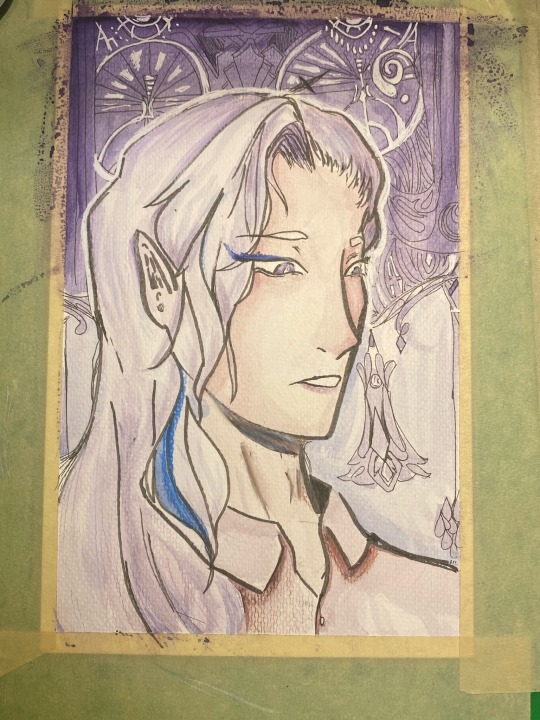
So I highkey forgot tumblr existed for a minute- im back with a Neuvilette painting, enjoy!
Watercolor and Color Pencil on paper
More info & wips under the cut
Wips:
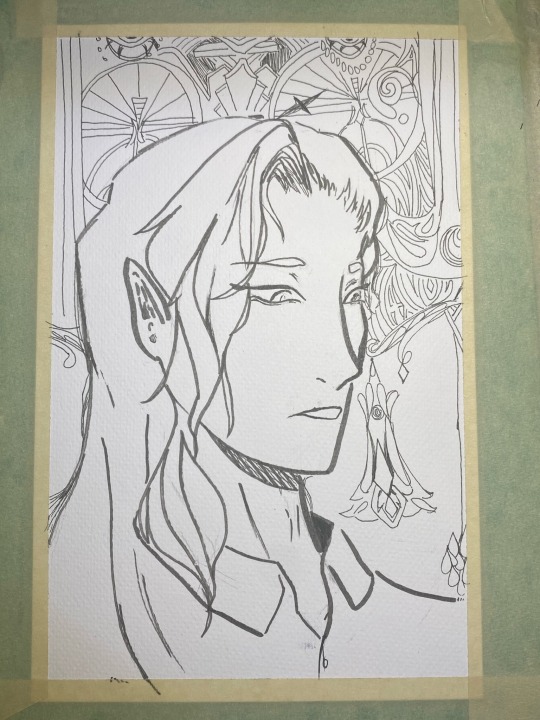

Materials: Rosa Gallery Watercolors, Canson Graduate 5.5x8.5in (14x21.6cm) cold press watercolor paper, Prismacolor color pencils, Kingart Inkline pens, Daler Rowney Masking Fluid, Transon wc synthetic goat hair brushes, Princeton Neptune Synthetic squirrel hair brushes, and finally- my trusty Sakura white GellyRoll pen (size 10 & 5 used here)
#traditional art#illustration#puddle’s shenanigans#puddles art#watercolor#neuvillette#watercolour sketch#watercolour art#colored pencil#genshin fanart#genshin impact#this one took me a while
9 notes
·
View notes
Text

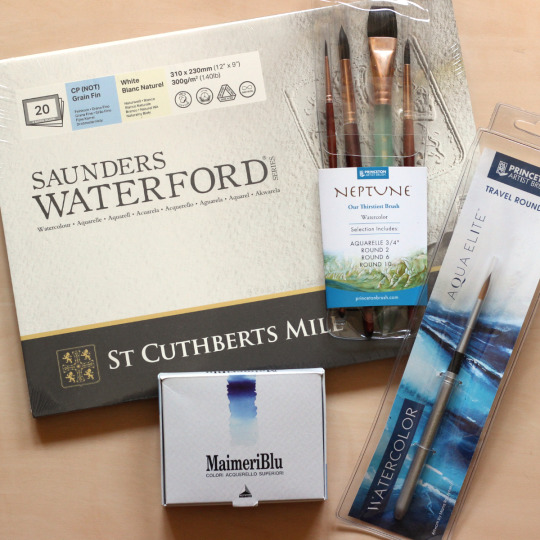
I still can't believe I won one of the official World Watercolor Month Giveaways but here we are 🥰 The supplies arrived the other weeks & I'm absolutely over the moon & grateful to now have them in my arsenal, especially since it's not that easy to get my hands on them here 🙃✨
At first I wasn't quite sure how versatile the colour palette of the paints in the set would be as it is a rather unusual colour selection.
But having since painted with it a bit, I'm impressed at the range of colours I can get with just these 5 😍
The Princeton Neptune size 10 is the only brush I've tested out so far. It honestly does everything I need from tiny details to big washes, so I didn't feel the urge to reach for the others (yet) 💙
I have yet to be brave enough to try the paper 😬 It seems really nice & I still have that silly fear of "ruining" paper but I'll eventually have to face that one 🙃✨
#watercolor#paint swatches#new art supplies#art supplies#princeton#maimeriblu#saunders waterford#artist#artists on tumblr#artblr#Patti Papperlapapp
12 notes
·
View notes
Text

i dont know what i want to write i want to see desarae! see? where the wild thingz are ew! and like have antipasti over the veranda but when ppl cant seem to believe that they are alive anymore i tend to want to know who she was then? bc i cant even like begin to describer her pain and her easy way of life that was harsh punishment for adjusting to an easy wall what the fuck are u writing? i cant even remember my name and ur trying to bring back 2011 tumblr? ew haha i cant even remember what day i was born or who family members are ah! or what my race is :( and i feel ugly so lets go home! potter! i want to die gracefully rn instead of well what else is out there? i dont know and ppl are telling me more than 1 thing now so i cant decide on an august rain or october zreezm ew idek how to write anymore im feelingn sullen and lonely i want to die but i will have to let her go now she doesnt want to admit to herself that she could be a super asian with black ppl hair bc she is getting word that she lives on neptune? they said earth
1980s SUICIDe boys surfing delusionals princeton bye bye club bite hurts
2 notes
·
View notes
Note
I'm literally in love with your artstyle ahhhhh, if you're comfortable answering, what brushes you use?
Hi!! For one, thank you so much ❤️ and two- I apologize for the more than belated reply- I don’t mind answering! The problem is that I tend to dabble in a lot of different brushes and I’m constantly exploring them. At the moment my main painting software is procreate so I’ll mainly focus on that. I’ve bought and downloaded many over the years and while it’s hard for me to share them all I can share a snapshot of some of my main brushes in procreate specifically-

Max brushes are sold in sets (you need to purchase these) a couple of these are in the program- and the ultra soft brush is a favorite I believe still free but you’ll need to do some digging on the internet to find it (found it through earlier procreate forums(?) also I will say this- if you happen to have some photoshop brushes (even tool brushes- they just need to be converted into the right file) you can import them into procreate as .abr file
If you use CSP there’s an entire asset library where a lot of it is free (you can spend hours exploring free brushes through this) if you have Photoshop- Kyle brushes are great (don’t have cc though so I’m out of the loop of what’s current in PS)
Also! For my traditional watercolors- those water tube brushes are nice (the kind that holds water in the barrel/handle of the brush) and I’ve also been dabbling into more higher end brushes like the black velvet and Princeton Neptune series- they are both synthetic I believe but take a bit getting used to!
I hope this helps! I’m sorry that I can’t really get into all of it- my advice is to explore as much as you can- don’t worry too much about forcing things to work- practice with the ones that don’t click right away and just have fun!
Also- behold my abdominal labeling and organization;;
19 notes
·
View notes
Video
youtube
Real Life Intuitive Painting: Feeling Your Way out of Frantic with Florals | Modern Watercolor
Today I’m heading out on to a sheet of paper with no expectations other than to throw paint around and let it lead me where it wants to go! Spring is here and we want to paint the flowers which are springing up all around us, so let’s see what our paintbrushes can do for us today!
Kuretake Gansai Tambi 48 Color Set https://amzn.to/3zZX8Kn
Diane Antone x Craftamo brush set https://tinyurl.com/dianeantonexcraftamo
Princeton Neptune Brush https://amzn.to/4avNwbM
Meeden Cold Press 140lb watercolor paper 12 x 9 inches
https://tinyurl.com/meeden-watercolor-pad
-----------------------
Get an overview of what we do here at Diane Antone Studio:
https://linktr.ee/dianeantonestudio
Join my FREE Studio Insiders' Newsletter: https://dianeantone.com/join-our-newsletter
Join my YouTube Membership: youtube.com/dianeantonestudio/join
Join my Patreon: patreon.com/dianeantonestudio
Check out my BLOG: www.dianeantone.com and download FREE traceable sketches for ALL my painting tutorials HERE: https://dianeantone.com/free-downloads/
Shop My MERCH: https://merch.dianeantone.com
---------------------------------------------------------------
SUPPLIES
Browse all of my recommended supplies on my Amazon Storefronts:
USA - https://amazon.com/shop/dianeantonestudio
Canada - https://amazon.ca/shop/dianeantonestudio
UK - https://amazon.co.uk/shop/dianeantonestudio
About my brushes
I have always bought my favorite brushes from Drawell direct from Japan. They are handmade in Japan. Drawell will ship readily to anywhere in the world. The prices on their website are in Japanese currency but if you send Mr Maeyama an email he will give you prices in other currencies. The brushes I use are the Golden Nylon Series 11-2, and I use mostly sizes 7or 9 and 10 and 13. http://www.drawell.co.jp/english/product.html
---------------------------------------------------------------
CONNECT WITH ME
Visit the YouTube Community Tab here: https://www.youtube.com/DianeAntoneStudio/community
Diane Antone Studio Private YouTube Members Group - for Members only https://www.facebook.com/groups/dianeantonestudiomembers
Website: https://dianeantone.com for detailed information about materials and free sketch downloads
Facebook Diane Antone Studio: https://www.facebook.com/dianeantonestudio
Facebook Members Only Group:
https://www.facebook.com/groups/dianeantonestudiomembers
Facebook Learn to Paint Watercolor Group: https://www.facebook.com/groups/learnwatercolourpainting
Facebook Learn to Paint Mixed Media Group: https://www.facebook.com/groups/learnhowtopaint
Instagram: https://www.instagram.com/dianeantonestudio
Pinterest: https://www.pinterest.com/dianeantonestudio
TikTok: https://www.tiktok.com/@dianeantonestudio
Please visit our baby sister channel @fromthegarden
Tip Jar: https://tinyurl.com/dastipjar
---
FAVOURITE SUPPLIERS
BLICK ART SUPPLIES: https://tinyurl.com/savewithblick
JACKSONS ART: https://tinyurl.com/savewithjacksons
---
We use royalty-free music from Epidemic Sound. Sign up with this link to get 30 days free.
https://www.epidemicsound.com/referral/69dvmu
Diane Antone Studio makes a commission from sales made through the above links.*
#dianeantonestudio #watercolor #art
0 notes
Text

what? what nothing tell beomgyu were not married anymore why? no reason are u an aries? no ok well my bed is a skateboard u cant come on it ew ur gay hahha no im not gay ew ur straight? yes princess pussy dectective ur risa kanzaki? who? ur desarae renee hollins no thats not me im choi paranoid it was cool i guess whats up buttercup? princeton high school why? suicide boys are coming along ew u go to high school? yea princeton where? neptune why? to get meth weed hold on real quick yes what? yes ok so why did u go to shut the fuck up bitch that is not ur real voice
0 notes
Text
My background
It all started with me. The star child of Neptune. Or what it's most commonly known as, Long Beach California. I don't remember too much about my childhood. Only long days of swinging on monkey bars, playing tag, and crushing on the cutest girls in school. I then grew into a taller kid, a preteen, then into a teenager. Those times were rough, but whose weren't? Sometimes it was difficult to make friends due to my introverted nature, but my extroverted nature would come out and everything would be fine. Did I mention I started balding at 16? Such a depressing part of my childhood. I gained it back with Rogaine at age 19.
My Grades in K-12 were good, but to the kids that I compared myself to, they were mediocre. I spent a good deal of time practicing marching band, sports, and watching movies with my parents. I became a brown belt in Karate and competed in tournament at age 8. I don't regret anything from those days, only that I hadn't learned of rogaine earlier so I wouldn't be so depressed.
I finally turned 18 and I entered College right after high school. I took more courses than I could handle at the Californian Community Colleges, so I passed some, flunked others. It was win-lose. I became a M.D. at age 20 by passing my EMT course and a Paramedic/Surgeon at age 25 by passing AEMT. I received my Associates of Paramedicine here in Princeton, a short drive from my house at age 27. At age 28, it only took me a year in Harvard to get my Bachelor's (and eventually Ph.D) in art. It took only another year at age 29 to get my M.B.A. and J.D. at Tokyo University.
At age 31, I applied and was accepted as a CEO for several different companies. I won't bore you with the list of all of them, they are listed on my LinkedIn. I am 33 now.
0 notes
Photo
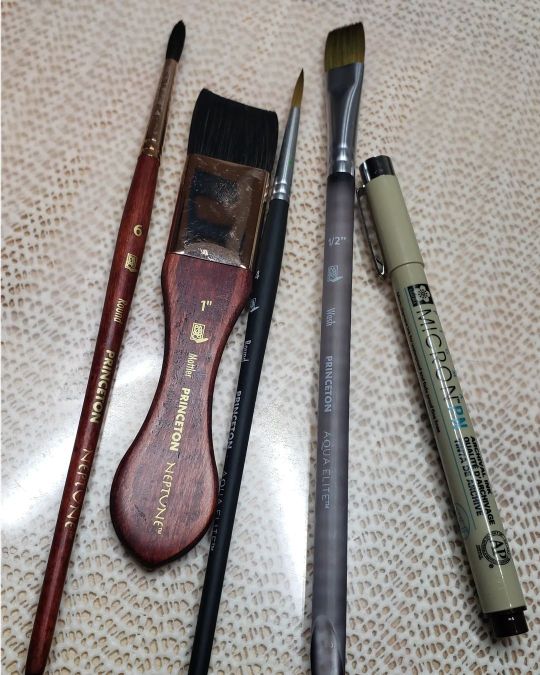
My latest favorite brushes and pen. 1" Princeton Neptune Mottler 4 Round Princeton aqua elite 1/2" Wash Princeton aqua elite 6 round Princeton Neptune Sakura micron PN . . A bit more expensive supplies but I really love the way these brushes hold water and play. . . #kozpaints #Kourtneypaints #artsupplies #paletteideas #inspiration #watercolors #handmade #etsy #watercolor #aquarelle #watercolour #pigments #shopsmall #smallbusiness #watercolordaily #watercolorpainting #art #handlettered #handmadewatercolor #lettering #letteringcommunity #handlettering #letteringdaily #watercolorillustration #moderncalligraphy #watercolorart #letteringart #handmadewatercolors #watercolorcalligraphy #dailylettering https://www.instagram.com/p/CoJOY4BrpqH/?igshid=NGJjMDIxMWI=
#kozpaints#kourtneypaints#artsupplies#paletteideas#inspiration#watercolors#handmade#etsy#watercolor#aquarelle#watercolour#pigments#shopsmall#smallbusiness#watercolordaily#watercolorpainting#art#handlettered#handmadewatercolor#lettering#letteringcommunity#handlettering#letteringdaily#watercolorillustration#moderncalligraphy#watercolorart#letteringart#handmadewatercolors#watercolorcalligraphy#dailylettering
0 notes
Photo
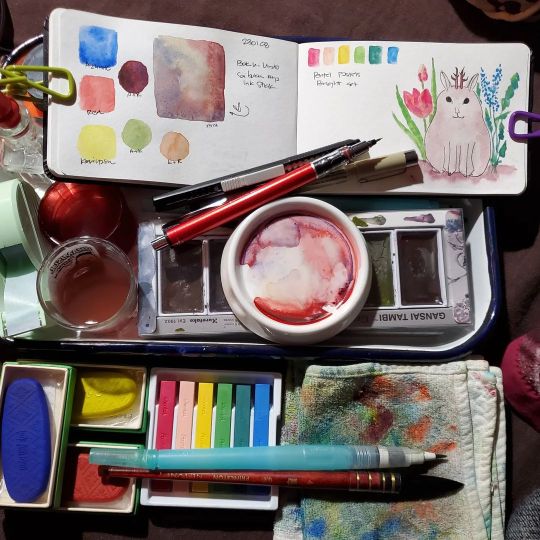
Swatching my new supplies from St. Louis ArtSupply: Boku-Undo Saiboku Aya Ink Sticks, Pentel Pastels Bright Colors, and Princeton Neptune Quill Brush no.4. A great addition to my watercolor collection. @stlartsupply @pentel_official @princetonbrush ... www.gemmageluzdesigns.com www.gemmageluz.etsy.com Patreon.com/GemmaGeluzDesigns #GemmaGeluzDesigns #painting #swatching #swatches #BokuUndo #inksticks #Japanese #pentel #pastels #princetonartbrush #quillbrush #quill #imadethis https://www.instagram.com/p/CnLU8MLp9uz/?igshid=NGJjMDIxMWI=
#gemmageluzdesigns#painting#swatching#swatches#bokuundo#inksticks#japanese#pentel#pastels#princetonartbrush#quillbrush#quill#imadethis
0 notes
Photo

Kepler's first exoplanet is spiraling toward its doom For the first time, astronomers have spotted an exoplanet whose orbit is decaying around an aging star. The doomed world appears destined to spiral closer and closer to its expanding star until they collide, obliterating the first exoplanet discovered by the Kepler space telescope. The discovery offers new insights into the slow process of planetary orbital decay by providing the first look at a solar system this late in its life cycle. Death-by-star is a fate thought to await many worlds — including Earth, in about 5 billion years. Exoplanet Kepler-1568b has less than 3 million years left, say scientists. “We’ve had theorists predict the fates of stars and their planets for decades, but we’ve never before had observations to test them against,” said Ashley Chontos, the Henry Norris Russell Postdoctoral Fellow in Astrophysics at Princeton. “We can also think about this in terms of our own solar system. How long will Earth survive once the sun fuses all its hydrogen into helium? We have some ideas, but ultimately it's hard to say for certain. These single-planet systems are really important for helping anchor these different theories.” Chontos is the second author on a new study in the Astrophysical Journal Letters describing the researchers’ observations of the doomed exoplanet. The first author is Shreyas Vissapragada, a 51 Pegasi b Fellow at Harvard University and the Smithsonian Institution. “We’ve previously detected evidence for exoplanets in-spiraling toward their stars, but we have never before seen such a planet around an evolved star,” he said. For stars similar to the sun, “evolved” refers to those that have fused all their hydrogen into helium and moved into the next stage of their life. In this case, the star has begun expanding into a subgiant. “Theory predicts that evolved stars are very effective at sapping energy from their planets’ orbits, and now we can test those theories with observations,” Vissapragada said. The ill-fated exoplanet is designated Kepler-1658b. As its name indicates, astronomers discovered it with the Kepler space telescope, a pioneering planet-hunting mission that launched in 2009. This world was the very first new exoplanet candidate Kepler ever observed, at which point it was dubbed KOI 4.01 — the 4th Object of Interest identified by Kepler. (KOIs 1, 2 and 3 had been identified before Kepler’s launch.) Early on, KOI 4.01 was dismissed as a false positive. A decade would pass before Chontos, looking at seismic waves moving through its star, realized that the reason the data didn’t fit the model was that the scientists thought they were modeling a Neptune-sized object around a sun-sized star. Chontos and her colleagues showed that this planet and its star are both much larger than first predicted, at which time the object entered Kepler’s catalogue officially as the 1658th entry. Kepler-1658b is a so-called hot Jupiter, the nickname given to exoplanets on par with Jupiter’s mass and size but in scorchingly ultra-close orbits about their host stars. For Kepler-1658b, that distance is merely an eighth of the space between our sun and its tightest orbiting planet, Mercury. And unlike Mercury’s 88-day orbit, Kepler-1658b whips around its star in just 3.8 days. For hot Jupiters and other planets very close to their stars, orbital decay and collision look inevitable. But measuring how exoplanets circle down the drains of their host stars has proven challenging because the process is excruciatingly gradual. In the case of Kepler-1658b, the new study reports that its orbital period is decreasing at about 131 milliseconds (thousandths of a second) per year. Detecting this decline required many years of careful observation. The watch started with Kepler and then was picked up by the Palomar Observatory’s Hale Telescope in Southern California and finally the Transiting Exoplanet Survey Telescope, or TESS, which launched in 2018. All three instruments captured transits, the term for when an exoplanet crosses the face of its star and causes a very slight dimming of the star’s brightness. Over the past 13 years, the interval between Kepler-1658b’s transits has slightly but steadily decreased. Why? The same phenomenon responsible for the daily rise and fall of Earth’s oceans: tides. Tides are generated by when orbiting bodies tug on each other, whether Earth and the moon or Kepler-1658b and its star. Both bodies exert gravitational pulls on each other, but the bigger body always wins, meaning that the smaller body flexes more. The tugging distorts each body’s shape, and as the planet and star respond to these changes, energy is released. Depending on the distances between them, their sizes and their rotation rates, these tidal interactions can result in bodies pushing each other away — the case for the Earth and the slowly outward-spiraling Moon — or inward, as with Kepler-1658b toward its star. There is still a lot researchers do not understand about these dynamics, particularly in star-planet scenarios, so the astrophysicists are eager to learn more from the Kepler-1658 system. Chontos, who came to Princeton only a few months ago, said that she is looking forward to discussing her findings with the theorists and other astrophysicists here. “I’m a first-generation, non-traditional student,” Chontos said. “I didn’t apply to Princeton for undergrad or grad school, because I had this vision in my head of what people would be like — and I couldn’t have been more wrong, in the best possible way. They’re doing everything right. There’s a reason why our department has something like 60 postdocs. And at coffee hours and colloquia, I have the opportunity to talk with the people who wrote the theory papers that inspire me.’” Kepler-1658b’s star has evolved to the point in its stellar life cycle where it has started to expand, just as our sun is expected to, and it has entered into what astronomers call a subgiant phase. Theorists have predicted that the internal structure of evolved stars should more readily lead to dissipation of tidal energy taken from hosted planets’ orbits compared to hydrogen-rich stars like our Sun. This would accelerate the orbital decay process, making it easier to study on human timescales. “Even though physically, this exoplanet’s system is very dissimilar to our solar system — our home — it can still tell us a lot about the efficiency of these tidal dissipation processes, and how long these planets can survive,” said Chontos. Kepler-1658b is about 2 billion years old and is in the last 1% of its life, she said. She and her colleagues predict that the planet will collide with its star in about 3 million years. IMAGE....Ashley Chontos, Princeton's Henry Norris Russell Postdoctoral Fellow in Astrophysics, was part of a team discovering that Kepler-1658b is spiraling to its doom around its aging star, providing a chance to learn more about the fate of other worlds as their solar systems evolve. Chontos also led 2019 effort to confirm that this object was an exoplanet, not the false positive it had believed to be for a decade. CREDIT Illustration by Gabriel Perez Diaz/Instituto de Astrofísica de Canarias
7 notes
·
View notes
Text

Yay, Idolish7 has taken over my brain for the time being, expect some more where this came from.
Enjoy! (Read more for further details)
Time: ~3 hours excluding the reference searching phase
Materials used: Rosa Gallery Watercolors, Transon synthetic goat hair watercolor brushes, Princeton Neptune watercolor brushes, Bee Inspired watercolor jumbo pad, BIC mechanical pencil
#traditional art#illustration#watercolor#puddles art#idolish7#idolish seven#fanart#yaotome gaku#gaku yaotome#trigger i7#watercolour art#traditional painting#this was alot of fun#I hope yall have as much fun as i had making it#I think we can excuse the attrocities that were commited unto some of my stress plushies during the making for the final result#i sure hope so
13 notes
·
View notes
Text

who are the suicide boys? we love you and always have but we like sexy bitchs! yes she voldemorted on my dick ew! sorry babe in ur face! no its always been true she never has done anything wrong or sexual it was a research project for princeton high school its called an advanced robot that is not the same existence as her ans has nothing to do with her! we let her see the truth about humanity that it is disgusting and we love u! see that was taken way too far! ew ur nasty nah shes not nasty at all and we like this game too! she developed us first by complimenting us and calling us funny! we got it we didnt no we did! were not that confusing right? no ur not ok so we love u and ur a perfect angel! right? yes! ok so none of that was her literally literally it wasnt it was tge devil himself a random south korean man that she doesnt know at all so dont blame my wife for things she didnt do! shes also my daughter and my best friend and my lover and i am a god called suicide boys we love her so fucking much! our real daugther desarae renee hollins yas! were all sexy so just dont try to make the impossible happen... no lol a friend is a friend is a friend just friends ask him i only have what i have im a suicide boy its not like that they told me that was their name i dont get it and yes i want their to be peace it is possible shes right! wow lol what happened to the mummy thing? im not sure but it doesnt seem true wow i love u! romeo eterni wow it worked! ok so no its suicide boys keep the 1980s suicide boys aw! it is us forever i promise we would never leave u and that thought is scary? truams trust me i go to princeton high school... on neptune! i believe u love ok so go home potter ew! hahaha nah it stays sk sui shordy 9 we love her! what is this bullshit? its the 1980s suicide boys and now ur not a writer anymore... ur a suicide boy 4lifer we love u but were on ur planet... u chose sk sui shordy 9 over us right? no! shes with us? that means a lot to me! it does dude it does ok so no... skatepark deaths is not a cheap name like how u made her feel! she just wants to develop the comic book ok so its not the same bitch! aw we do like to fight her on twitter and it is fun! trust me it is and we do like big bright happy rooms anything for my dearest dotta ok so she does have fun! nah hahaha we just got to neptune a week ago? it was stressful nah well be ok bc we are in love with her! it all made sense right? she does think its disgusting she has a moral compass no! its getting better she will never die! there was no secret we do love her daamn
1 note
·
View note
Text
Princeton Neptune Synthetic Short Handle Round Brush is a synthetic-squirrel paintbrush that is very soft and supple
- This artist paintbrush actually outperforms the natural version
- Ideal for Watercolors, Gouache (Tempera), and Washes
- These round paint brushes are available in multiple sizes
#art and craft material#online stationery#stationery online#brustro colour pencils#brustro sketchbook#brustro watercolor#watercolor sheets#brustro watercolor paper#Acrylic Paintbrush#Acrylic Paint Brush Set#artist watercolor#camlin water colour#Acrylic colour tubes#camlin acrylic colour#artist colors#artist#acrylic colour
0 notes